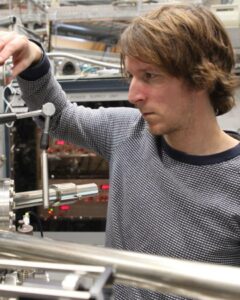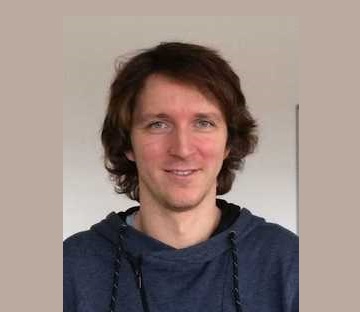
Realization of magnetic circuits exploiting lateral couplings
Place : IRIG/SPINTEC, room 447 CEA Building 10.05 (presential access to the seminar room at CEA in Grenoble requires an entry authorization. Request it before January 27th at admin.spintec@cea.fr)
video conference : https://univ-grenoble-alpes-fr.zoom.us/my/olivier.fruchart
Abstract : Novel spin-based logic architectures, based on vertical magnetic multilayers, are being developed to provide high-performance nonvolatile data retention and processing. As a counterpart to the vertical stacks, we have recently developed two new lateral couplings based on (i) the Dzyaloshinskii–Moriya interaction (DMI) in systems with non-uniform anisotropy [1] and (ii) on the exchange interaction in ferrimagnetic films [2], which significantly boost the possibility to design novel planar magnetic circuits.
The first concept exploits the chiral coupling mechanism between adjacent magnets where the non-collinear magnetic anisotropy competes with the interfacial DMI in Pt/Co/AlOx trilayers [3, 4]. When an in-plane (IP) magnetized region is fabricated next to an out-of-plane (OOP) magnetized region, the adjacent magnetic moments are coupled in a chiral manner. The chiral IP-OOP structure can be implemented in a domain wall inverter, the essential building block for all implementations of Boolean logic. Based on this principle, we realized reconfigurable NAND and NOR logic gates, making our concept for current-driven DW logic functionally complete [5-7].
The second coupling makes use of the strong lateral coupling mechanism in a single GdCo ferrimagnetic layer relying on the exchange interaction [2]. This interaction is achieved by spatially patterning the compensation temperature of the ferrimagnet. We have shown that the strength of the interaction can be manipulated by tuning the geometrical parameters.
The generation of these powerful coupling mechanism is, however, limited to a very narrow family of materials. To overcome this bottleneck, we have developed a novel method to pattern arbitrary magnetic landscapes based on local laser annealing. The underlying magnetic properties are linked to heat-activated processes such as crystallization, alloying or oxidation. We demonstrate how this method opens the way to create landscapes with grayscale capability with unprecedented applications in chiral spintronics and beyond [8].
- [1] Luo, Z. et al. Science 363, 1435 (2019).
- Liu, Z. et al. Phys. Rev. B 107, L100412 (2023).
- Hrabec, A. et al. Appl. Phys. Lett. 115, 130503 (2020).
- Liu, Z. et al. Phys. Rev. Appl. 16, 054049 (2021).
- Luo, Z. et al. Nature 579, 214-218 (2020).
- Luo Z. et al. Phys. Rev. Appl. 15, 034077 (2021).
- Zeng Z. et al. Appl. Phys. Lett. 118, 222405 (2021).
- Riddiford L, Brock, J. A.. et al. arXiv:2401.09314 (2024).
Biography : Aleš received his PhD in 2011 from Institut Néel/CNRS for his work on magnetic domain wall dynamics in ferrimagnetic and ultrathin magnetic films with perpendicular anisotropy. In 2012 he joined the Condensed Matter group at the University of Leeds where he pursued his work on high-spin-orbit interaction magnetic systems. In 2015 he became a post-doctoral fellow at Laboratoire de Physique des Solides at Université Paris-Sud where he focused on physics of magnetic skyrmions in systems combining dipolar and DM interactions. Since 2018, he is a senior scientist at the Mesoscopic Systems group at ETH Zurich with the main interest in spintronics.

